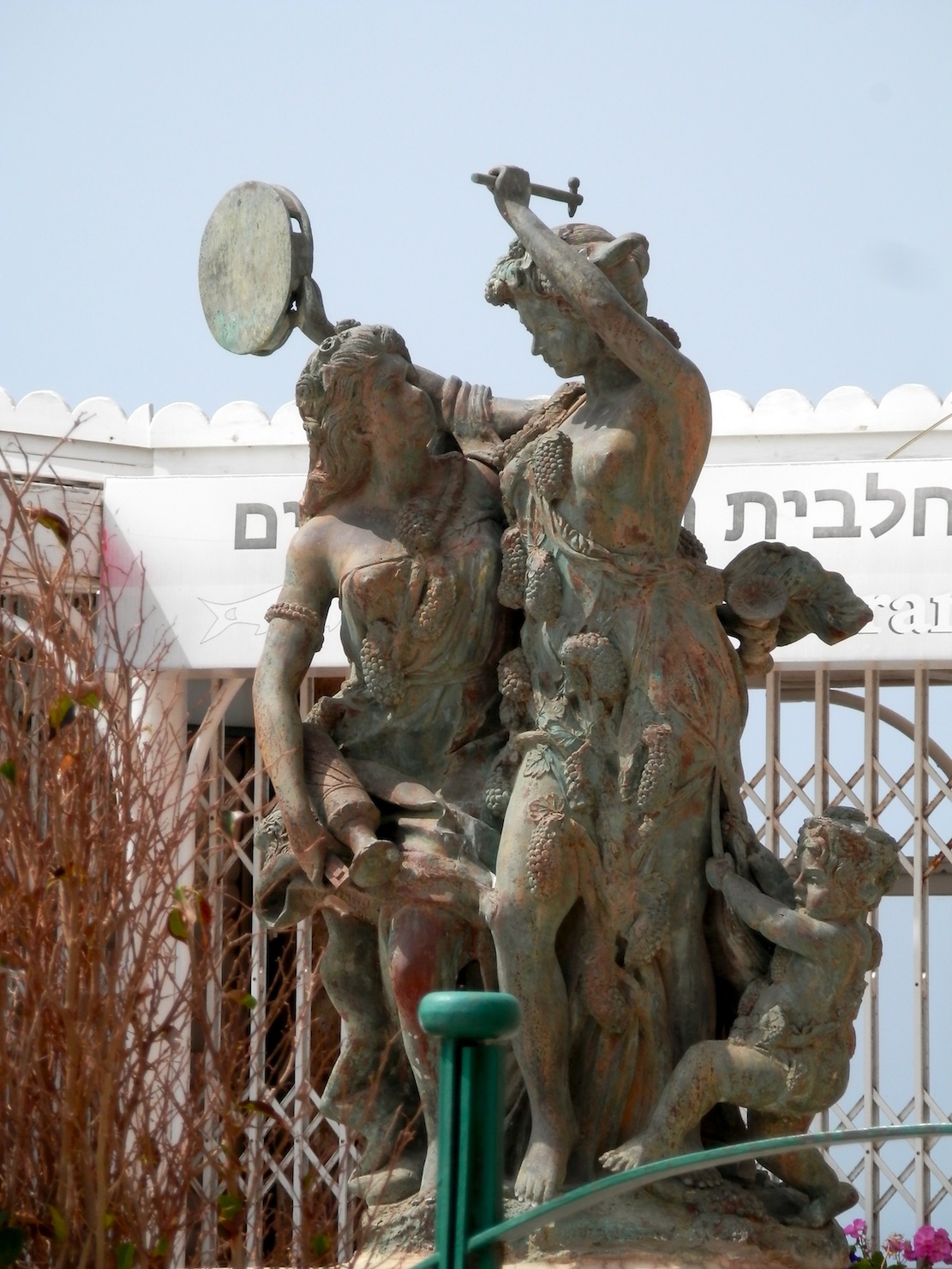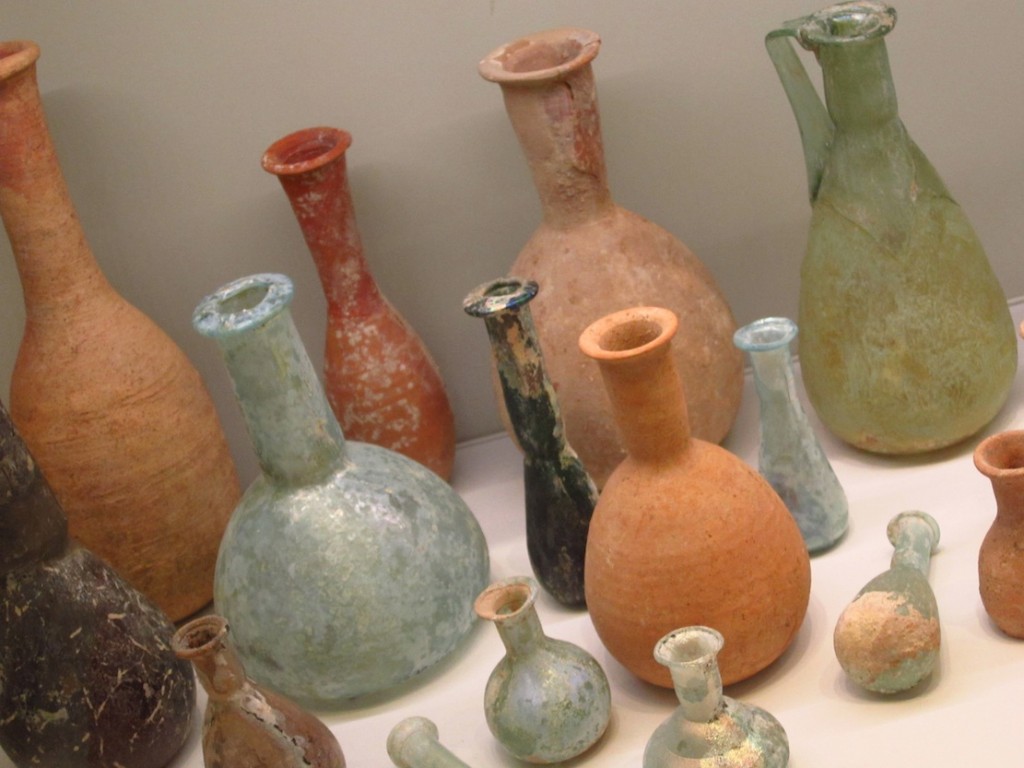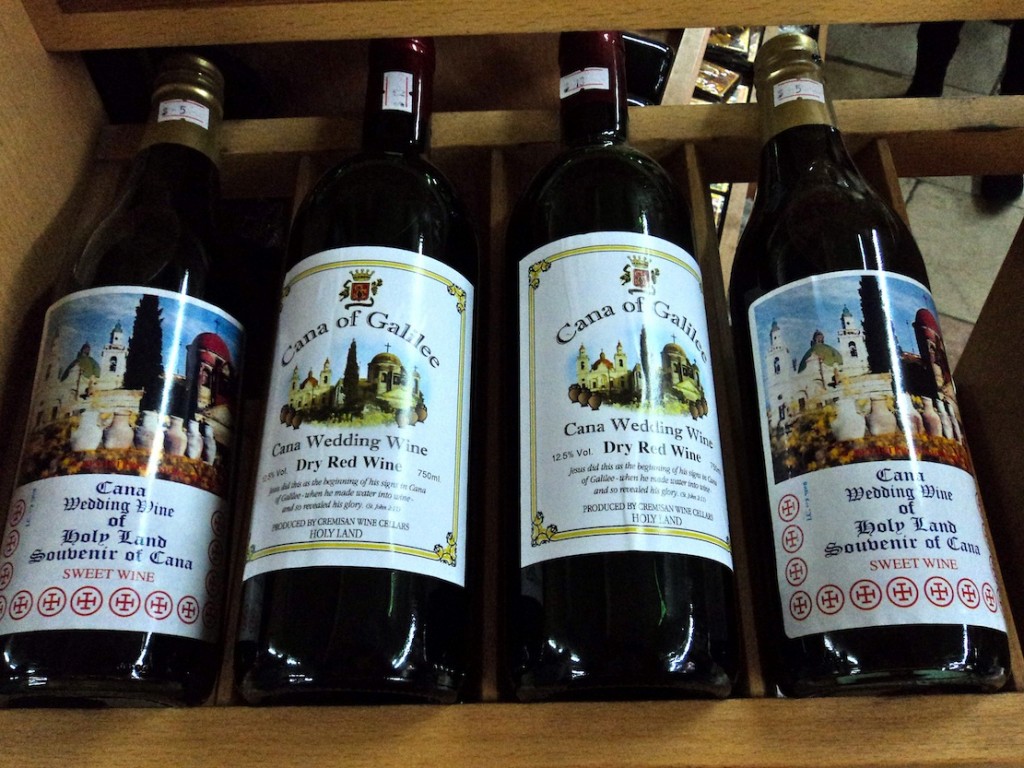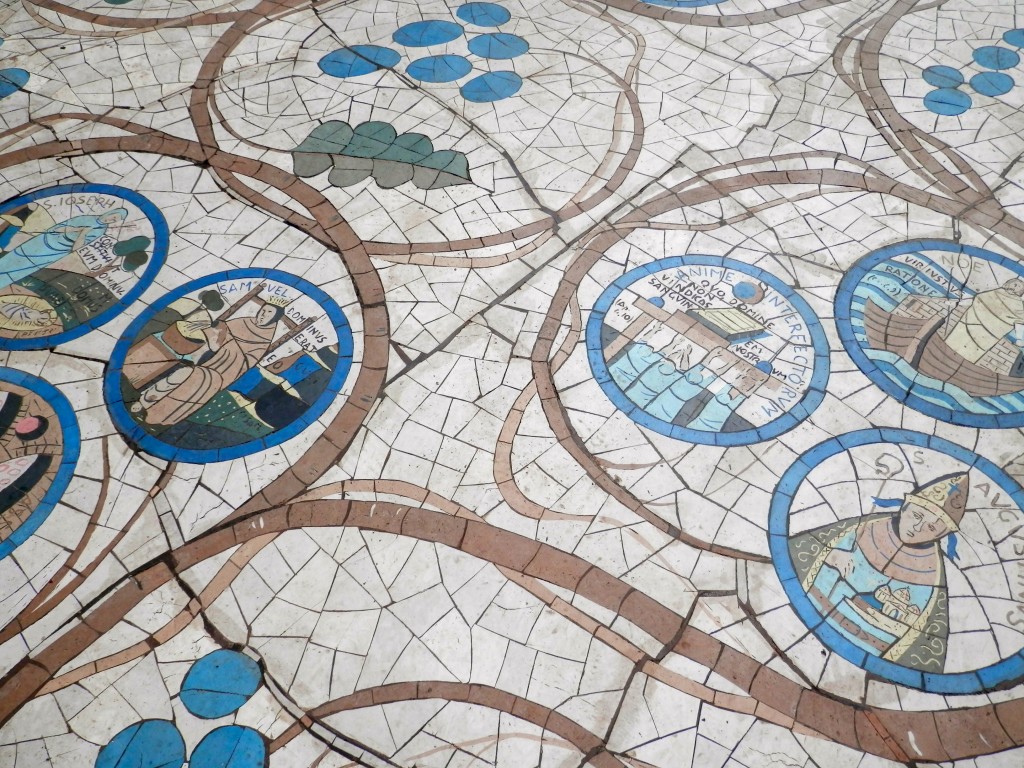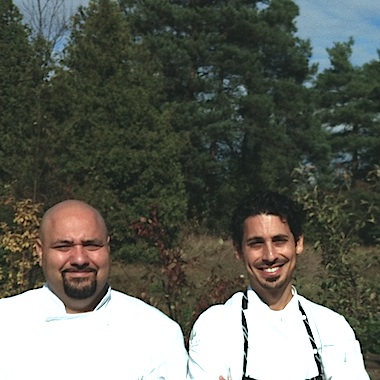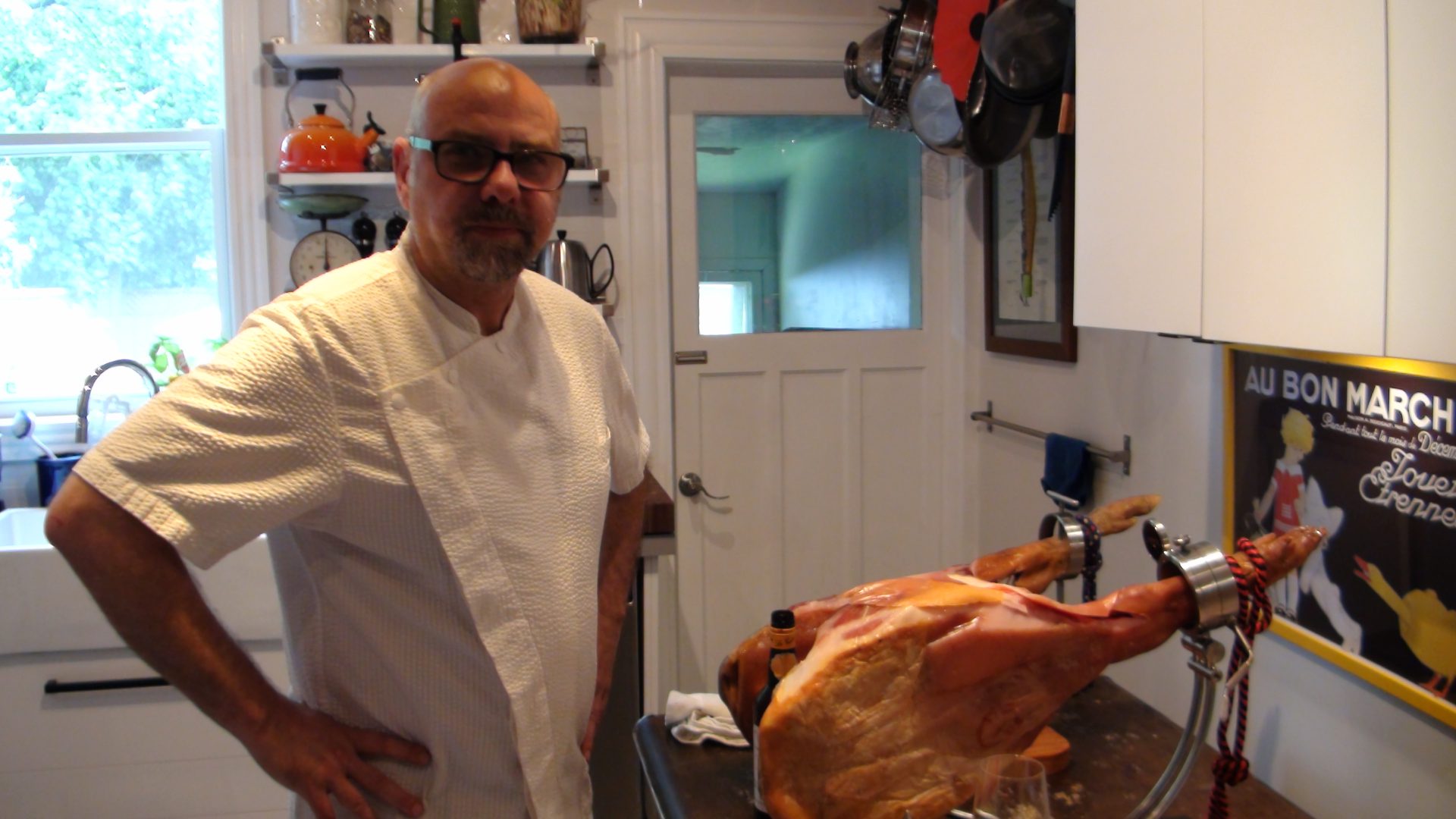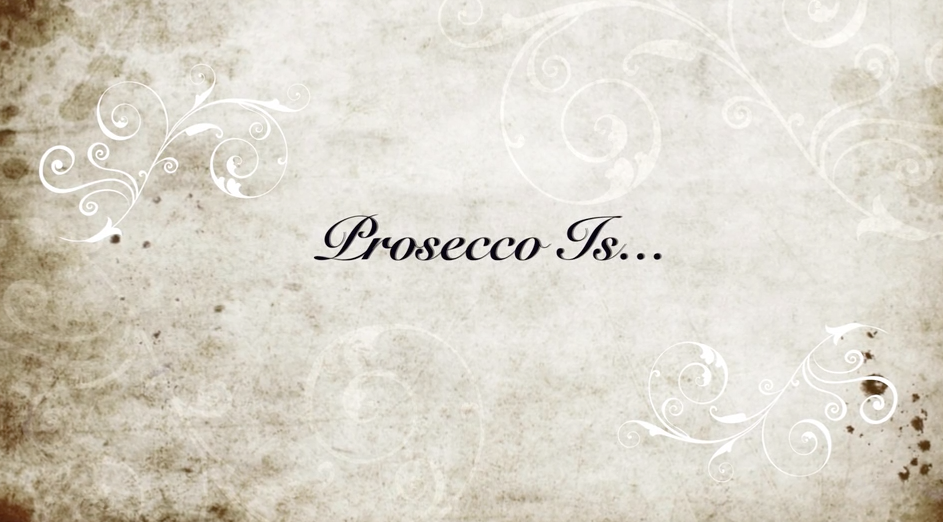Wine and Art is an ongoing GFR series on the relationship between the two creative endeavours by working artist and author Lorette C. Luzajic.
In ribbons of pale pinks and blues and yellows, pastels so faint they merged into white light, dawn rose over the Dead Sea. The stillness was so profound I thought that time had stopped, but then the muezzin’s morning call to prayer sounded, stirring the others from their sleep, and the world began again. The evening before, the same scene had burned scarlet and orange. In Jordan, the colours of the landscapes changed every few minutes with the shifting lights. At noon, the rocks were bleached to grey, de-saturated like an overexposed photograph. But in the dark, the blackness between the stars was a deep purple, the colour of the best wine. My trip to the holy land was, like for many others, a pilgrimage of sorts. I had come for the wine and for the art. None of Israel, Palestine, and Jordan is particularly famous for either. And these are young countries, one not a century, one almost seventy, and one not quite born. Yet much of both histories, of wine and of art, began here. This profound paradox was part of what took me six thousand miles from where I’m typing now. It’s true that art is part of every culture known to us, but the Judeo-Christian stories on which western art history was partly founded all happened there. As for wine, its genesis was first recorded in that same book. Indeed, the good book tells us that Noah wasted no time planting the vineyards after the flood. As Napa Valley’s Covenant wine co-owner Jeff Morgan told the Jewish Journal, “We Jews have the oldest codified relationship to wine of any people on earth.”
References to wine are frequent throughout Judaica, indicating its value in everyday life as well as religious ritual. The Kiddush for example is a wine blessing at every Sabbath, and at weddings, symbolizing joy and gratitude. And wine was unabashedly central to ancient Jewish erotica as well. Read the Song of Solomon, where the vine’s enchantment was second only to a beautiful woman. And in the words of Joshua Malin from Vinepair, “Someone’s downing a glass of wine at a party in nearly every chapter of the Scroll of Esther.” King David wrote that wine was a gift to “gladden the hearts of men.” The old religious proscriptions shunned both abstinence and overindulgence, matching exactly modern science’s findings for the best physical and mental health. The apocryphal Jewish writings of Sirach stated bluntly, “Wine is like life to man if you drink it in moderation.” The only older written reference to wine so far is a cuneiform clay tablet from Ur (today’s Iraq) notating beverage sales. Archeologists unearthed the first known winery to the north, in Armenia, from around 4,000 B.C., and the earliest evidence of viniculture is from the Azarbaijan province of Iran, around 5400 B.C. Persian culture, too, is steeped in wine lore, and one can hardly imagine their ancient art and poetry without it. In light of this, it is another paradox, and a crime against humanity and history that imbibing in modern day Iran is illegal. The death penalty for wine is sometimes still enforced today. The grape juice referenced throughout the various poetry of the region was definitely fermented, despite what a minority of Christian branches may argue. But it wasn’t the table finery that we are used to today. Early wine was crude and syrupy, like aftershave mixed with cheap sherry. The Egyptians preferred their imports spiced with pepper, juniper berries, and honey to make it potable. Perhaps the shopkeepers of Nazareth should revive this tradition. Along the narrow laneways, between the clatter of Arabic market stalls selling colourful brassieres and shoes made from camels, merchants at Cana all offered souvenir wine. Crafted to reflect the region’s grapes with historical accuracy, it was wretched. Worse, they were giving out samples, hoping to entice busloads of tourists. We all planned on it, but after trying it, no one bought any!
Cana, of course, is where the most infamous rabbi performed his first magic trick. Professional atheist Christopher Hitchens said that Christ’s legendary “transmutation of water into wine during the wedding at Cana” was “the only worthwhile miracle in the New Testament.” Evidently, Hitchens cared little for the blind or the lame, but still, point well taken. Whatever one’s religious persuasion, the story is profoundly significant. He was letting all the future Calvinists in on a little secret: that there really couldn’t be a celebration without wine. Not long after this milestone, wine took on an even more sacred meaning for Jesus’s followers, symbolizing the blood of life. Sometimes the French, Spanish and Italians remind us that, though Israel and the region of today’s Middle East had alcoholic grape beverages, they are the ones who turned swill into wine. And that is fair enough. Wine flourished in Italy and beyond during Greek colonization and during the Roman empire, even before the common era, with plantations run by slaves. But it was pretty much the same sludge. At least in part, the traditions of Christian monks, miles and centuries away from Nazareth, helped craft those crops into the elixir we now expect for our tables. The same stories inspired the same groups of Europeans to create the visual masterpieces of the western past. The works span from early church mosaics unearthed recently at Madaba in Jordan, to the dazzling icons of the Byzantium, to the priceless legacies of Michelangelo, Titian, Correggio, Veronese, Tintoretto. All the places I walked- Capernaum, Tiberius, the Sea of Galilee, Golgotha, Mount Carmel, Jericho- were the locations for the legends that inspired many of the greatest works of art through all time.
On the last day of my pilgrimage, I stood on my hotel balcony with a cigar in one hand and the day’s sacrament, some local Shiraz, in the other. Under these eternal primordial stars, in a city 4000 years old, I felt cosmically connected to history. The noise of traffic and modern machinery was all around me, but yet, I was literally among shepherds who watched their flocks by night. The Middle Eastern beginning of grapes, or the ceiling frescoes at the Vatican, is not the whole story nor the only story. But it’s also true that without these stories, there might be nothing at all to tell about wine or art. 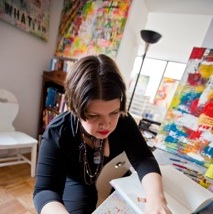 Lorette C. Luzajic is an artist and writer with roots in southern Ontario’s wine country soil. Native to Niagara, at home in Toronto, her work is inspired by wine, cheese, and bleak post-apocalyptic literature. Visit her at mixedupmedia.ca. Photo: Ralph Martin.
Lorette C. Luzajic is an artist and writer with roots in southern Ontario’s wine country soil. Native to Niagara, at home in Toronto, her work is inspired by wine, cheese, and bleak post-apocalyptic literature. Visit her at mixedupmedia.ca. Photo: Ralph Martin.

